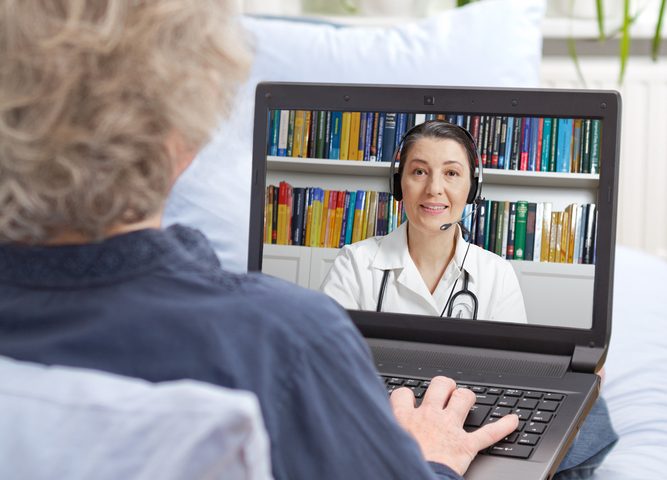Could Telehealth Create New Opportunities for Hemophilia Care?

I recently noticed that our healthcare providers offer virtual visits as part of our current insurance. I was fortunate last week to attend an event hosted by the Virginia Quality Healthcare Network. The presentation featured a talk on telehealth by Dr. Karen Rheuban, co-founder and director of the University of Virginia’s (UVA) Center for Telehealth. I was struck by Dr. Rheuban’s enthusiasm for telemedicine and her hopes for its use in specialized medical care.
I frequently read news releases about new hemophilia treatments, but I rarely see stories about new service-delivery models. While most states in the U.S. have Hemophilia Treatment Centers (HTCs), many patients and their families must travel for hours for treatment. In our family’s case, a trip to our HTC can take over an hour each way. Factoring in the appointment time, this means a minimum of four hours off from work and school.
HTC appointments are typically consultations on a range of issues, from social work to genetics, many of which do not require a physical examination. Additionally, availability of appointments and types of services varies significantly between HTCs — some serve patients for a limited number of hours a month, while others offer specialized clinics for women and girls.
As I listened to Dr. Rheuban, I became fascinated by the potential of virtual visits. As she described UVA’s Center for Telehealth, which has 152 partner sites including 63 clinical specialties, I began to wonder about the HTC network. What if patients in Montana no longer had to leave their state or even their home to receive care? What if a trip to our local doctor for a routine visit could be combined with a telehealth appointment with our HTC hematologist or social worker? Could telehealth lead to a reality where all of the practitioners who look after our family’s health are virtually in the same room?
What if the revolution in bleeding disorders treatment is not confined to new medications, but also includes how our families interact with practitioners? Does telehealth provide the means to level up care so that services at each HTC are accessible and consistent?
For bleeding disorders patients, the future is changing rapidly as new treatments create opportunities that were previously unavailable. While telehealth is new territory for healthcare delivery, even factoring in its complexity of technology, administration, and governance, it offers the possibility of creating unprecedented access to providers.
Interoperability and integrated care are two terms that appear on the American Telemedicine Association’s website. These encapsulate the promise of telemedicine: the possibility that one day our healthcare systems will work together seamlessly. For bleeding disorders patients, this type of next-generation thinking is key to keeping our families healthy and thriving, while focusing on new possibilities on the virtual road to treatment.
***
Note: Hemophilia News Today is strictly a news and information website about the disease. It does not provide medical advice, diagnosis, or treatment. This content is not intended to be a substitute for professional medical advice, diagnosis, or treatment. Always seek the advice of your physician or another qualified health provider with any questions you may have regarding a medical condition. Never disregard professional medical advice or delay in seeking it because of something you have read on this website. The opinions expressed in this column are not those of Hemophilia News Today or its parent company, Bionews Services, and are intended to spark discussion about issues pertaining to hemophilia.







Leave a comment
Fill in the required fields to post. Your email address will not be published.